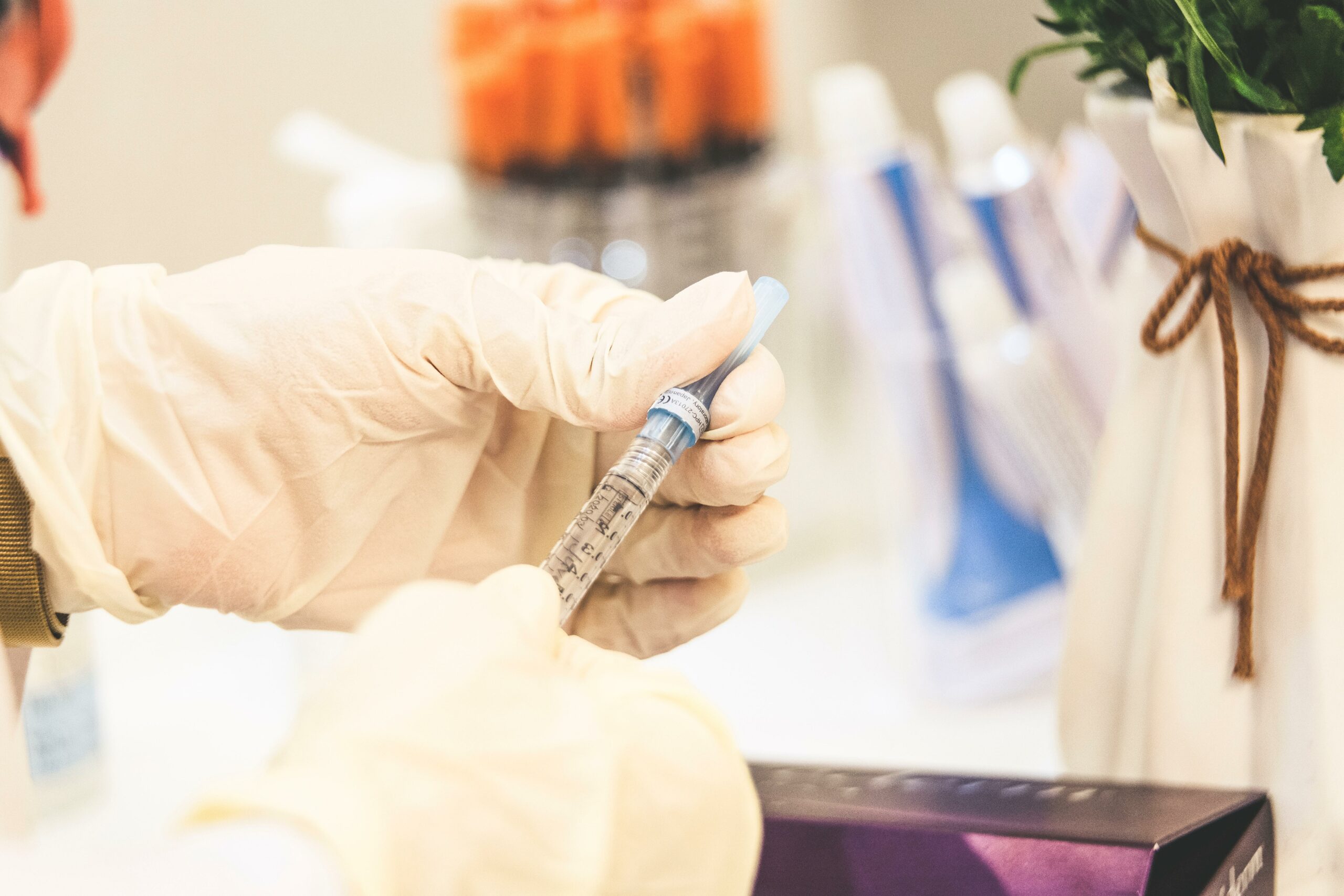Are you curious about the different types of scars and the emotional effects they can have? Look no further as we unveil the secrets surrounding these fascinating marks on our skin. Scars are more than just physical reminders of past injuries or surgeries, they can also hold deep emotional significance for individuals. In this article, we will delve into the various types of scars that can form and explore the profound emotional impact they can have on those who bear them. Brace yourself as we decode the essential facts about scars, leaving no stone unturned in our quest for knowledge and understanding.

Facts About Scars
Scars – those lingering reminders of wounds and injuries that have healed. We all have them, but how much do we really know about these resilient marks on our skin? Let’s dive into the fascinating world of scars and uncover some essential facts that will demystify these often misunderstood features.
Scars come in different forms – from keloids and hypertrophic scars to atrophic scars, the way scars appear can vary greatly. Keloids and hypertrophic scars are considered the most severe because they are marked by an overgrowth of scar tissue, leaving them raised, ropey, and often purple or red in appearance. On the other hand, atrophic scars appear as sunken scars, resulting from conditions like acne or chickenpox.
“The appearance of scars can vary depending on how they are formed and how they heal.”
Age and genetics play a role – Have you ever noticed how some scars seem to fade away more quickly than others? Well, that’s because the formation of scars is influenced by age and genetics. Older individuals may experience slower healing and thinner skin, but interestingly, they are also less prone to scarring. So, while age may affect the healing process, it offers some protection from the formation of scars.
Patience is key – When it comes to scars, time is of the essence. They can take quite a while to fully heal, sometimes more than a year. Even after a wound has seemingly healed, scar tissue continues to change and remodel. In fact, it can take up to 12-18 months for a scar to fully mature. So, if you’re eagerly waiting for that scar to fade away, be patient, as the natural healing process knows its own pace.
“Scars require time and patience to fully heal and fade away.”
Various treatments are available – If you’re seeking ways to minimize the appearance of your scars, fret not, for there are numerous treatments at your disposal. Corticosteroid injections, laser therapy, and even surgical removal are viable options. However, one of the safest and most effective treatments is the use of silicone scar sheets, which gradually flatten and fade scars over time.
“Silicone scar sheets offer a safe and effective way of minimizing scars’ appearance.”
Scars are a testament to our body’s healing power – Scars are a natural part of the body’s healing process, serving as a reminder of its resilience. While most scars will fade over time, they never completely disappear. They can be classified into different types, ranging from flat, pale scars to raised, hypertrophic scars.
Scars can be caused by various factors – Accidents, burns, surgery, acne, illness – the list of potential causes for scars is extensive. When the skin is injured, the body initiates its defense mechanisms. It creates new tissue made of collagen to reseal itself and promote healing, resulting in the formation of a scar.
Treatment options for raised scars – Raised scars, such as keloids, can be bothersome both physically and aesthetically. Fortunately, there are methods to address them. Steroid injections and freezing treatments can help flatten and reduce the size of raised scars or keloids. These treatments also alleviate associated symptoms like pain, itchiness, hardness, and discoloration.
Scars transform over time – Don’t be disheartened if your scar initially appears red, dark, and raised. As the healing process progresses, scars gradually become paler and flatter. The natural remodeling of scar tissue can take up to two years, so remember to give it time and nurture your scar with care.
“Scars evolve and transform as they heal, gradually becoming less noticeable over time.”
Scars possess diverse appearances – Each scar has a story to tell, and its appearance can vary greatly depending on the type and severity of the injury. Scars can be a fine line, almost imperceptible unless closely examined, or they can become a pitted hole on the skin. Alternatively, they may manifest as an abnormal overgrowth of tissue, reflecting the unique healing journey of the individual.
Scars are the body’s defense mechanism – When the skin is injured, our body initiates a complex immune system response. Scars are formed as the body’s way of protecting against harmful substances and promoting wound closure. By creating new tissue made of collagen, the body ensures that the injured area is sealed and healing can commence.
Factors influencing scar formation and healing – Numerous factors come into play when it comes to scar formation and healing. Age, genetics, and the type of injury all influence the process. While scars may fade and flatten over time, they never fully disappear, becoming a part of our unique self.
In conclusion, scars are not just marks on our skin; they carry stories of resilience and healing. Understanding their different types, causes, and treatment options allows us to navigate their presence with confidence and embrace our individual journeys of healing.
“Through understanding, we can embrace our scars’ stories and find comfort in our healing journeys.”
Scars can be fascinating and mysterious, holding secrets of our past experiences. If you’re curious about facts about acne scars, we have just the article for you! Dive into the world of scars and learn about their different types, such as hypertrophic scars and atrophic scars. Discover how each of these unique scars forms and find out interesting facts about keloid scars. Are you wondering why your old scar is turning red? Our article on that topic will shed some light on the matter. So, let’s begin this captivating journey through the world of scars with our article, “Facts About Scars.” Don’t forget to explore our URLs for a comprehensive understanding:
- Facts About Acne Scars
- Facts About Hypertrophic Scars
- Facts About Atrophic Scars
- Types Of Scars
- Fun Facts About Keloid Scars
- Why Is My Old Scar Turning Red?
Now, let’s embark on a fascinating journey into the realm of scars!
Types of Scars
When it comes to scars, there’s more than meets the eye. These reminders of our body’s healing power come in different forms, each with its own characteristics and treatment options. Let’s dive into the world of scars and unveil the secrets behind their types.
Atrophic Scars: The Sunken Scarring Story
Atrophic scars are the result of collagen overexpression that blocks tissue regeneration. The collagen fibers break down, leaving behind a sunken appearance. These scars often occur after conditions like acne or chickenpox, where the body fails to produce enough collagen to fill the gap. Picture them as little dips in your skin, leaving you longing for smoothness.
But fear not! There are treatment options available, such as dermal fillers or laser therapy, that can help restore the plumpness to your skin.
Emotional effects of scarring
Scars, though physical in nature, can have a profound and lasting impact on our emotional well-being. The psychological effects of scarring go far beyond the surface, often causing individuals to experience a range of negative emotions, from depression and anxiety to shame and reduced self-confidence. Let’s delve into the emotional effects of scarring and uncover the hidden layers behind this common but often misunderstood subject.
Imagine a scar as a visible reminder of a past event, an indelible mark etched on our bodies that tells a story. But sometimes, that story is one we’d rather keep hidden. Scars have the power to elicit embarrassment and anxiety, as we fear others’ reactions and judgments. We become acutely aware of how our scars make us stand out from the crowd, leading to self-consciousness and a desire to conceal our imperfections.
Moreover, scars are not merely physical reminders; they can evoke traumatic memories and associations. Every time we catch sight of our scars, we are transported back to the moment of injury or the painful experience that led to their formation. It’s like rewinding a mental tape, replaying the event over and over again. These recurring memories can be distressing and contribute to increased anxiety and psychological distress.
It’s not just our internal struggles that are affected by scars; they impact our interactions with others as well. Scars can create a strain in social interactions, making us feel more vulnerable and self-aware. We may find ourselves struggling to communicate effectively or withdrawing from social situations altogether, fearing judgment or rejection. This can lead to reduced intimacy, avoidant behaviors, and feelings of isolation.
It’s clear that the emotional effects of scarring are far-reaching and significant. However, it’s important to remember that there is hope and support available. Understanding the emotional impact of scars is the first step towards addressing and mitigating these effects. Whether through therapy, support groups, or simply opening up to trusted friends and family, there are ways to navigate the emotional journey of healing.
“Scars not only mark our bodies but also leave an indelible imprint on our emotions, shaping our perception of ourselves and our interactions with the world.”
As a society, we must strive to foster empathy and understanding towards those with scars. By recognizing and accepting the emotional burden they carry, we can create a more inclusive and compassionate environment. It’s time to break the silence and have meaningful conversations about the emotional effects of scarring, shedding light on a topic that is often overlooked.
“Our scars are not a sign of weakness, but a testament to our strength and resilience. They remind us of the battles we’ve fought and the challenges we’ve overcome.”
In conclusion, scars have a profound impact on our emotional well-being, often causing depression, anxiety, and reduced self-confidence. They can evoke traumatic memories and create strain in social interactions. However, by understanding the emotional effects of scarring and fostering empathy, we can support those who carry these visible reminders of their past. It’s time to address the emotional journey of healing and create a more inclusive and compassionate society.
Table: Emotional Effects of Scarring
| Emotional Effects | Impact on Individuals |
|---|---|
| Depression | Scars can contribute to feelings of sadness and despair. |
| Anxiety | Scars may lead to increased worry and apprehension. |
| Shame | Individuals may feel embarrassed or stigmatized by their scars. |
| Reduced Self-Confidence | Scars can lower self-esteem and hinder overall confidence. |
| Aggression | Some individuals may become more defensive or prone to anger due to their scars. |
| Strained Social Interactions | Scars may affect communication, intimacy, and social fulfillment. |
| Avoidant Behaviors | Fear of judgment may lead to avoidance of social situations or activities. |
“Scars have the power to shape our emotions, but by understanding their impact, we can support and uplift those who bear them.”
Causes, Treatment, and Prevention of Keloid Scars
[youtube v=”AmwCF4M7PE8″]
Keloid scars are a type of scar that forms as a result of excessive scar tissue formation. They can occur after a skin injury or even spontaneously without any prior trauma. Although they can develop on any part of the body, they are most commonly found on the upper chest, shoulders, ears, and neck.
The exact cause of keloid scars is not fully understood. However, they are more likely to develop after minor injuries such as trauma, burns, insect bites, surgery, or even immunizations. They are also more common in wounds that have been left open to heal naturally rather than being stitched together.
Keloid scars have distinct clinical features that make them easily recognizable. They are usually a purplish-red color, firm, smooth, and raised. They can be uncomfortable and itchy, and they may grow beyond the original wound area. While they can form on any part of the body, they are most commonly found on the shoulders, chest, earlobes, upper arms, and cheeks.
There are several complications associated with keloid scars. Not only can they be unsightly and cause negative social and psychological effects, but they can also limit movement and limb growth, especially if they affect a limb. While keloid scars are typically diagnosed clinically based on a thorough history and physical examination, a skin biopsy may be needed in some cases.
Treating keloid scars can be challenging, and success may vary from person to person. The primary aim of treatment is to reduce the cosmetic disfigurement and functional problems caused by the keloid, as well as alleviate any pain or itching. There are various measures that can be helpful, such as applying emollient creams and oils, using silicone scar reduction patches or gels, and using pressure dressings or garments. Surgical excision is also an option in some cases, though it carries the risk of developing a larger keloid.
Preventing keloid scars from forming in the first place is preferable. Strategies that may help include minimizing tension during surgery, using sutures to close wounds with minimal tension, limiting the number of sutures used, and avoiding unnecessary surgery and cosmetic procedures in individuals prone to keloid scarring.
While keloid scars are harmless and do not change into skin cancer, individuals with keloids do have a slightly higher risk of developing skin cancer compared to those without keloids.
In conclusion, keloid scars are a type of scar that forms due to excessive scar tissue formation. They can occur after a skin injury or spontaneously without any trauma. Recognizing the clinical features and complications associated with keloids is important for early diagnosis and treatment. While treatment can be challenging, various measures can help minimize the appearance and discomfort caused by keloid scars. Preventive strategies should be considered, especially in individuals prone to keloid scarring. Remember to consult a healthcare provider for personalized advice and treatment options.
“Keloid scars are a type of scar that forms as a result of excessive scar tissue formation. They can occur after a skin injury or even spontaneously without any prior trauma. Recognizing the clinical features and complications associated with keloids is important for early diagnosis and treatment.”
FAQ
1. What are the different types of scars?
- Scars can be classified into three main types: atrophic scars, hypertrophic scarring, and keloid scarring. Atrophic scars are characterized by sunken scarring and an overexpression of collagen that blocks tissue regeneration. Hypertrophic scarring and keloid scarring both involve excessive growth of stiff collagen, which extends over the tissue and inhibits tissue regeneration.
2. What factors can influence scar formation and healing?
- Factors such as age, genetics, and the type of injury can influence scar formation and healing. While scars may fade and flatten over time, they never completely disappear.
3. How do scars affect a person emotionally?
- Scars can cause adverse long-term psychological effects, including depression, anxiety, shame, aggression, and lower self-confidence. Those with scars may experience embarrassment and anxiety about others’ reactions to their scars. Scars can have traumatic memories and associations attached to them, leading to strain in social interactions, communication difficulties, reduced intimacy, and avoidant behaviors.
4. What are some common treatment options for scars?
- Different types of scars may require different treatment options, which can include dermabrasion, injections, or surgery. One of the safest and most effective treatments is silicone scar sheets, which help flatten and fade scars over time. Steroid injections and freezing treatments can also help flatten and reduce the size of raised scars or keloids, alleviating pain, itchiness, hardness, and discoloration associated with scars.
5. Can scars be prevented?
- Preventing wounds can help minimize scar formation. It is important to take precautions to protect the skin from injuries, such as wearing protective gear during activities with a high risk of injury and practicing good wound care and hygiene.














